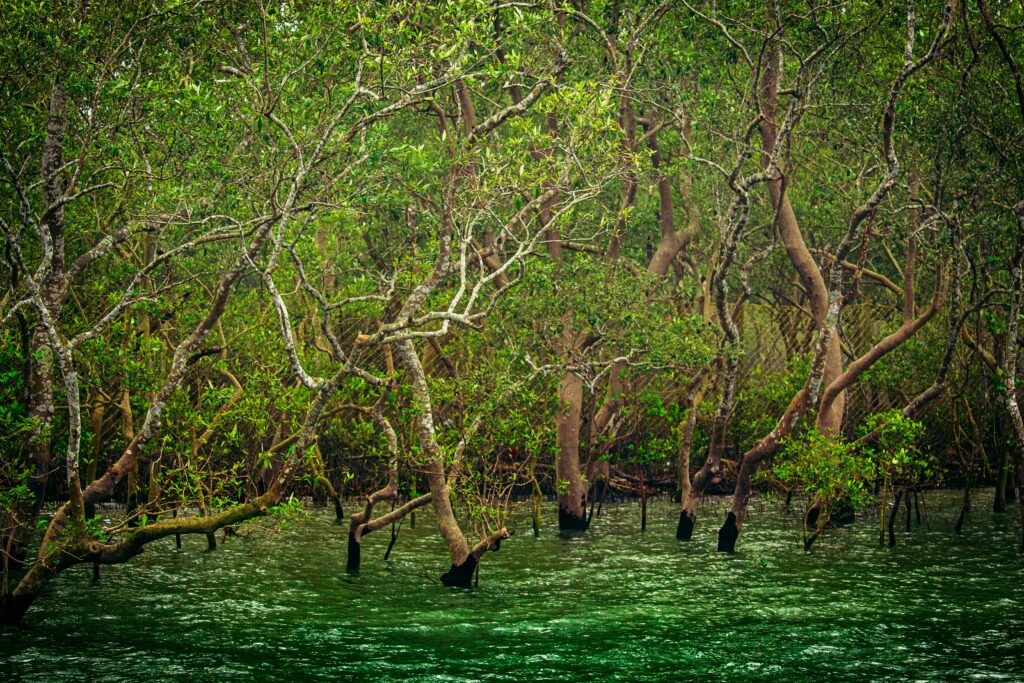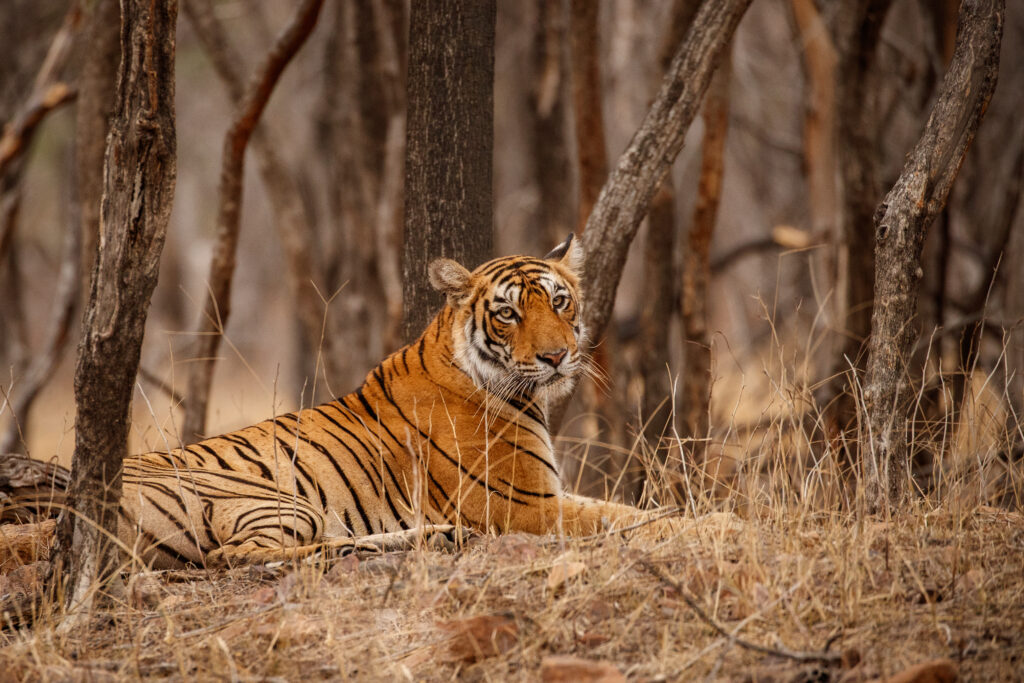Introductions
The Wildlife of the Sundarbans, located in the southern part of West Bengal, India, is a UNESCO World Heritage Site and a true marvel of nature. Spread across a vast area of about 10,000 square kilometers, this unique mangrove forest is home to a rich variety of wildlife, making it a must-visit destination for nature lovers and wildlife enthusiasts. Exploring the Sundarbans offers a rare opportunity to witness the incredible biodiversity of this ecologically valuable region and to encounter some of the most iconic creatures that call it their home.

Wildlife of the Sundarbans
The Sundarbans is considered one of the largest mangrove forests in the world, characterized by a network of interconnecting rivers, estuaries, and islands formed by the Ganges, Brahmaputra, and Meghna Rivers. Its name, Sundarbans, translates to “beautiful forest” in Bengali, and it truly lives up to its name. Besides its natural beauty, the Sundarbans is famous for being the habitat of the majestic Royal Bengal Tiger, making it a coveted destination for tiger enthusiasts.

The Royal Bengal Tiger is the star attraction of the Sundarbans and holds a significant place in the biodiversity of the region. The Sundarbans houses one of the largest populations of these magnificent creatures, estimated to be around 100 tigers. However, spotting a tiger in the dense mangrove forests is a challenge due to their elusive nature. Safari tours, led by experienced naturalists and forest guides, offer visitors a chance to venture deep into the wilderness and increase their chances of tiger sightings. The thrill of catching a glimpse of a tiger in its natural habitat is an unforgettable experience that will remain etched in your memory forever.

Apart from the mighty Bengal Tiger, the Sundarbans is also home to a diverse range of wildlife species, including numerous reptiles, birds, and mammals. Crocodiles, both the estuarine or saltwater crocodile and the freshwater Gharial, are commonly found in the rivers and creeks of the region. These prehistoric creatures can often be spotted sunning themselves on the riverbanks, creating a thrilling sight for visitors.
The Sundarbans is a haven for birdwatchers, with over 300 bird species calling the region their home. From colorful kingfishers to majestic raptors, the avian diversity is a sight to behold. Keep your eyes peeled for the iconic Osprey and the vibrant Oriental Pied Hornbill, which are commonly found in the area. The unique ecosystem of the mangrove forest provides an ideal habitat for these birds, making the Sundarbans a paradise for bird enthusiasts.

One of the most remarkable inhabitants of the Sundarbans is the Gangetic Dolphin. This freshwater dolphin species is known for its pinkish-gray color and its ability to navigate the murky waters of the mangrove creeks. Spotting a Gangetic Dolphin gracefully swimming alongside your boat is an enchanting experience that unveils the hidden treasures of the Sundarbans.
In addition to the charismatic megafauna, the Sundarbans houses a plethora of smaller mammals, such as fishing cats, spotted deer, wild boars, and macaques. These lesser-known creatures play a vital role in maintaining the delicate balance of the ecosystem and are integral parts of the Sundarbans’ wildlife tapestry. Observing their behavioral patterns and witnessing their interactions with the environment provides a deeper understanding of the intricate web of life that exists within the mangrove forests.
You Can Read Our Another Post Discover The Ancient Ruins of Fort St. George in Chennai
Exploring the Sundarbans is not just about wildlife encounters but also about immersing oneself in the unique and fragile ecosystem of the mangrove forests. The Sundarbans is home to one of the largest concentrations of mangrove trees in the world, with numerous species thriving in the saline environment. These mangrove forests act as a natural barrier against tidal waves and storms, protecting the surrounding areas from the ravages of nature. The intricate roots and tangled branches of the mangroves create a surreal landscape, offering a sense of adventure and discovery to every visitor.
To truly appreciate the grandeur of the Sundarbans, it is advisable to embark on a boat safari. Sailing through the meandering rivers and creeks, flanked by thick mangrove forests, allows you to delve deep into the heart of the wilderness. The safari offers a unique perspective, giving you an up-close view of the dynamic and ever-changing landscape of the Sundarbans.

When planning a visit to the Sundarbans, it is recommended to book a package tour that includes accommodations and guided excursions. Several tour operators in the area provide well-organized trips, ensuring the safety and comfort of visitors. Additionally, the guides are well-versed in the local ecology and have extensive knowledge about the wildlife, making your experience all the more enriching.
More: Wanted to download Odisha Magazines, visit here
The Sundarbans, with its incredible biodiversity, awe-inspiring mangrove forests, and elusive Bengal tigers, is a natural wonder that should not be missed. A visit to this unique destination takes you on a journey of discovery, immersing you in the beauty of nature and offering a glimpse into the intricacies of the delicate ecosystem. So, if you have a penchant for exploring untouched wilderness and a love for wildlife, pack your bags and set forth on an unforgettable adventure to the Sundarbans.
What is the Sundarbans?
The Sundarbans is a vast mangrove forest located in the Indian state of West Bengal, stretching across India and Bangladesh. It is the largest mangrove forest in the world and was designated as a UNESCO World Heritage Site.
What makes the wildlife in the Sundarbans unique?
The Sundarbans is home to a diverse range of flora and fauna, including numerous species that are endemic to the region and cannot be found anywhere else in the world. Its unique ecosystem of tidal rivers, swamps, and dense mangrove forests creates the perfect habitat for a variety of wildlife.
What kind of animals can be found in the Sundarbans?
The Sundarbans is famous for its population of Bengal tigers, which are the main attraction for many visitors. Other carnivores such as leopard cats, fishing cats, and estuarine crocodiles can also be spotted. The forest is rich in avian life, with over 300 bird species including colorful kingfishers, herons, and migratory birds.
Are there any endangered species in the Sundarbans?
Yes, the Sundarbans is home to several endangered species. Apart from the Bengal tiger, other endangered animals include the estuarine crocodile, Indian python, and Irrawaddy dolphins. The presence of these endangered species adds to the uniqueness and conservation value of the Sundarbans.
Are there any ecotourism activities in the Sundarbans?
Yes, there are various ecotourism activities available in the Sundarbans. Visitors can opt for guided nature walks, boat safaris, birdwatching, and even night safaris. These activities allow tourists to get a closer look at the unique wildlife and experience the beauty of the mangrove forest.

